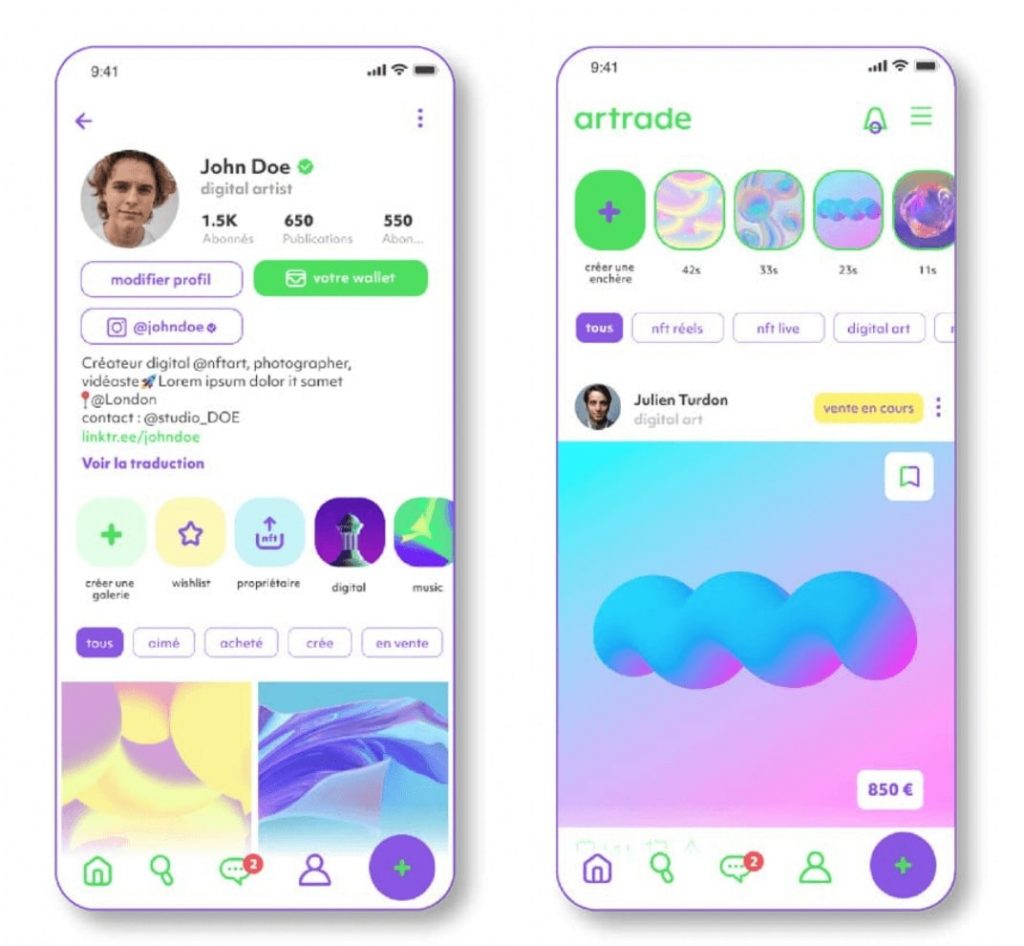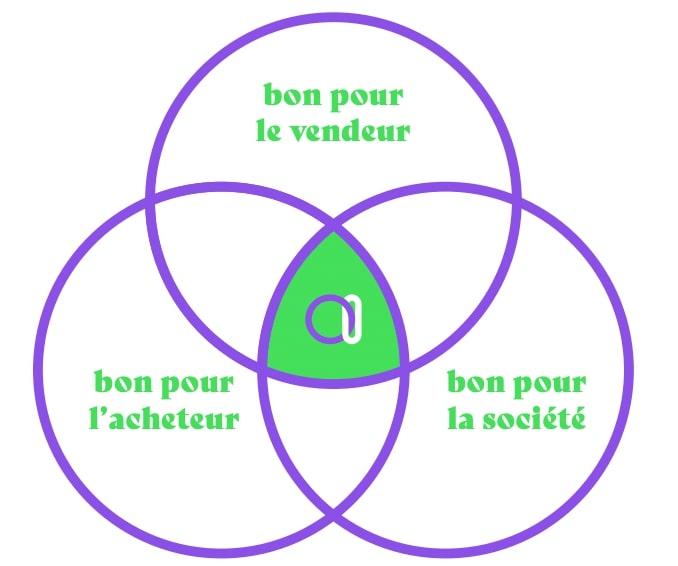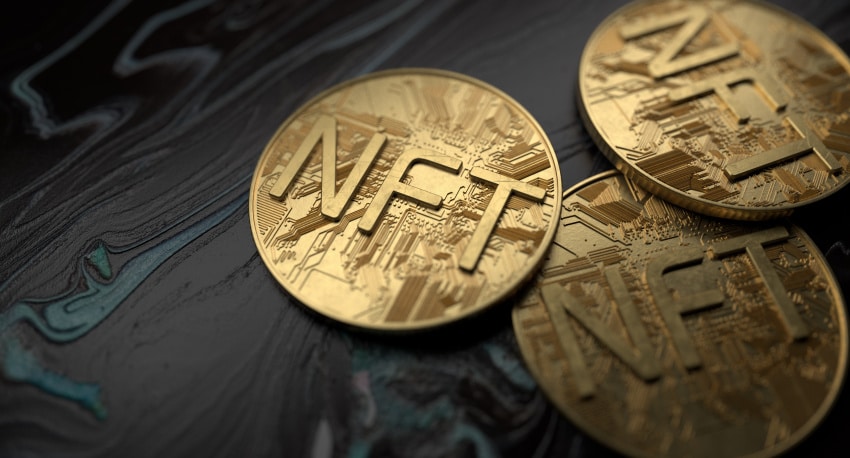The non-fungible token (NFT) sector has been one of the attractions of the cryptocurrency market over 2021. It has attracted a wave of new investors, especially celebrities, looking for their first digital work. To help them navigate this jungle, French startup Artrade (ATR) is launching the first social network dedicated to the burgeoning NFT industry.
Artrade, a French startup to connect creators and their audiences
Undeniably, 2021 has been marked by the explosion of the non-fungible token (NFT) industry. Although it has been around since 2017 or so, this new technology for making a token unique and identifiable really took off in August last year. As proof, the volume represented by NFTs has climbed by almost 43,000% in just one year.
Among the various uses of non-fungible tokens, it is particularly in art and collections that they have become known. Indeed, they make it possible to store an image, a video or a GIF on the blockchain and certify its authenticity. Indeed, one of the first NFTs projects to really emerge was Larva Labs’ collection of CryptoPunks.
In addition, many platforms offering the purchase of NFTs have already positioned themselves on this flourishing market, such as OpenSea or Rarible on the Ethereum blockchain (ETH). However, they are not really user-centric, nor are they creator-centric:
Artrade intends to change that. The application has been designed to meet the needs of as many people as possible, as simply as possible. The aim is both to make NFTs comparable to real, physical goods. But also to give artists and creators the exposure and recognition they deserve. “
Created in March 2021, Artrade is a web and mobile application that makes it easy to view, reference, curate, purchase and create NFTs. Inspired by the user experiences of the most popular social networks, notably Instagram, the French start-up’s ambition is to make the world of NFTs accessible to everyone.
Artrade, the first social network for NFTs
A desire to make the NFT market accessible
Those of you who have already bought an NFT on OpenSea, Rarible or even Solanart can testify, the use of these platforms is not very intuitive and is mostly reserved for those used to the blockchain. On the contrary, Artrade is designed so that even beginners in cryptocurrencies can easily invest in the digital art market.

A simple, uncluttered user interface, and close to the social networks we know (Source: Artrade Whitepaper)
The Artrade application has the traditional features of a social network. There is a news feed displaying digital artworks that may be of interest, similar to Pinterest. In addition, users can follow the profiles of artists they like to find all their best creations. They can also share and communicate with other users and, of course, get the NFTs they want.
The various features of Artrade
First and foremost, Artrade users can trade, buy or sell NFTs, in cryptocurrencies or fiat currencies. Supporting fiat payments was a priority for the Artrade team, in its ambition to get as many novice users on board as possible. By relying on the Stripe payment system, which allows for the conversion between fiat currencies and cryptocurrencies, it will therefore be possible to pay with a simple bank card.
The most anticipated option, NFT Live, allows you to create a “live” NFT from a phone or mobile device. This can be personalised immediately by adding effects (GIF, emoji, filters, text, etc.). However, only certain users will be able to access NFT Live, as they will need to have more than 10,000 followers on one of their social networks.
Finally, Artrade offers a feature called NFT Real. Through this feature, a user can sell an NFT associated with a real, physical asset. In other words, if you want to sell any object, Artrade offers to associate an NFT with it and put it up for sale on its platform. This option is particularly interesting for artists who wish to sell a work of art and certify its authenticity.
Artrade through the prism of its values
Success through responsibility
In his whitepaper, the creator of Artrade explains that he was greatly inspired by the spirit of the Sanpo Yoshi, a community of very prosperous merchants between the 17th and 19th centuries. They were the originators of a concept on which the French start-up wanted to base its project, “Three-Way Satisfaction”. In other words, good for the seller, good for the buyer and good for society.

Artrade’s values: putting the buyer, the seller and society back at the centre of the economy (Source: Artrade Whitepaper)
Simply put, sellers find themselves “in a controlled and secure environment, allowing them to maintain control” and buyers “benefit from total transparency and guarantees on their purchases”. As for society, this is an important aspect of Artrade’s values, and we’ll come back to it later, which is why the team wants to donate part of their profits to climate projects and charities via ClimatePartner and the Blockchain Charity Wallet.
ATR, a governance token
To follow in the footsteps of blockchain projects, Artrade has chosen to launch the ATR, its own native token. A true cornerstone of the platform, it plays a role in just about every operation a user can perform.
First of all, it is a utility token. All users purchasing NFTs on Artrade using ATRs will benefit from reduced transaction fees. If a user imports an NFT and displays it on their profile, they will generate passive ATR revenue in proportion to the value of their work. If a user shares content and displays other NFTs in their own gallery, they contribute to the running of the platform and are also rewarded with ATR. In short, it is a form of play-to-earn.
Obviously, Artrade has chosen to decentralise many aspects of its business model, including governance. As a governance token, ATR grants holders a right to vote in important project decisions in proportion to the number of tokens held.
In order to develop its project, Artrade relied on an ICO of its ATR token. A total of 900 million tokens will be distributed, or 50% of the total supply, at an initial price of $0.02. The capital thus raised, $30 million according to the team’s estimates, will be used to finance the necessary evolutions for the development of the platform over the next three years.
Solana blockchain, an eco-responsible solution
Mostly used at the beginning of the emergence of any new market, especially that of non-fungible tokens, the Ethereum blockchain is now more than saturated. This poses major problems in terms of network costs and energy consumption. Although new second-layer solutions are coming to relieve Ethereum, Artrade has chosen to focus on Solana, a more scalable and efficient blockchain in terms of cost, speed and energy consumption.
Indeed, this blockchain promises an average of 65,000 transactions per second, a cost per transaction of a few dollars and a transaction execution speed of 0.4 seconds. Given the impact of the mint of an NFT (the action of creating and implementing it in the blockchain), it is true that the choice of a low energy blockchain is essential.
Of course, the French start-up also wants to rely on the strong community that the Solana ecosystem has, especially in the NFT market.
Opening on 15 November 2021, the first round of Artrade’s ICO has already raised $1.5 million. At the time of writing, no less than $2.5 million has been raised by Artrade, almost 15% of the total target. If you want to participate, don’t worry, round 2 of the ICO closes on 20 January.
